Customer satisfaction is paramount in the current dynamic business environment. In meeting the heightened expectations of customers, where 46% of customers expect a response within 4 hours, call centers are challenged to handle growing impatience effectively. A strategic solution to this lies in the implementation of call groups.
Call groups are a game-changer in modern telephony, especially with VoIP. They boost efficiency by letting multiple extensions ring simultaneously so that any available agent can answer quickly.
Curious to see how this can revolutionize your team’s call handling and ramp up customer satisfaction? Keep reading to find out more.
Organizations can employ call groups with simultaneous ringing for swift responses or round-robin for balanced workloads, improving efficiency and customer satisfaction.
You can customize call group ring patterns in CallHippo to match your team dynamics. Try Callhippo now.
What is a Call Group in VoIP?
A VoIP call group distributes incoming calls among predetermined users or extensions within an organization, like a customer service team, to handle high call volumes efficiently. This setup allows calls to simultaneously, sequentially, or in a round-robin manner ring on multiple phones, ensuring they are answered quickly and improving customer satisfaction.
For example, a “Customer Support” call group can have all customer service representatives (CSRs) receive calls, ensuring no single CSR is overwhelmed and reducing customer wait times.
This approach not only enhances accessibility but also supports a collaborative work environment by sharing the call management responsibility among team members.
Benefits Of Using Call Groups
Call groups enhance operational efficiency and customer satisfaction by ensuring prompt responses to calls, balancing workload among team members, and offering scalable, cost-effective solutions for businesses aiming to maintain high service standards.
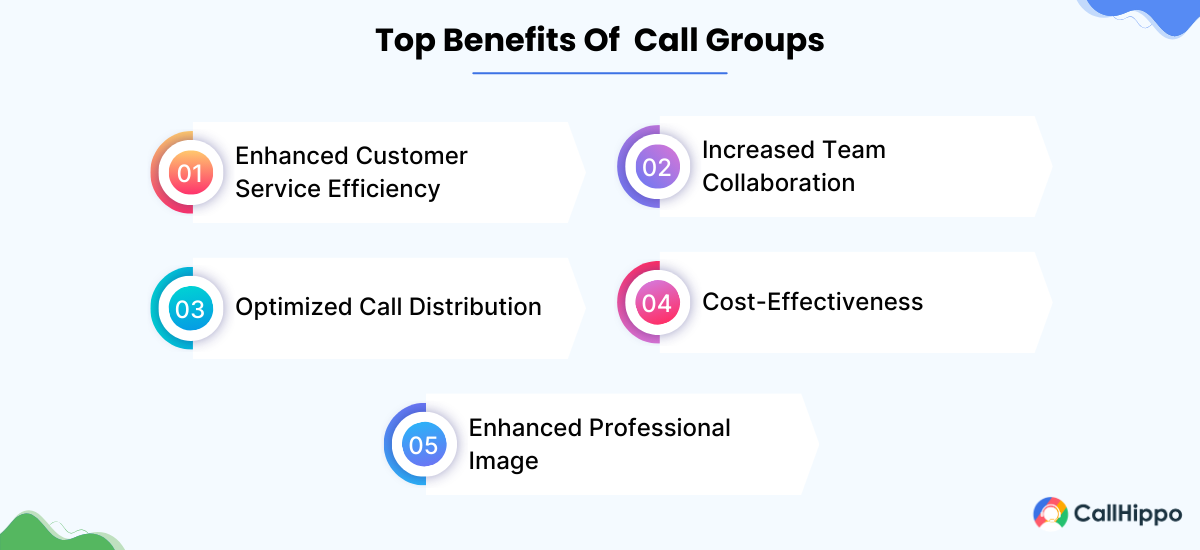
Let’s look at some of the key benefits of using call groups.
1. Enhanced Customer Service Efficiency
Call groups significantly boost customer service efficiency by ensuring that incoming calls are promptly answered. This system reduces caller wait time and increases the likelihood that customers have their queries addressed quickly and satisfactorily.
By distributing calls among a team, no single member is overwhelmed, allowing for more thoughtful, high-quality interactions. This streamlined approach leads to improved customer satisfaction, as callers appreciate rapid responses and the feeling that their concerns are a priority.
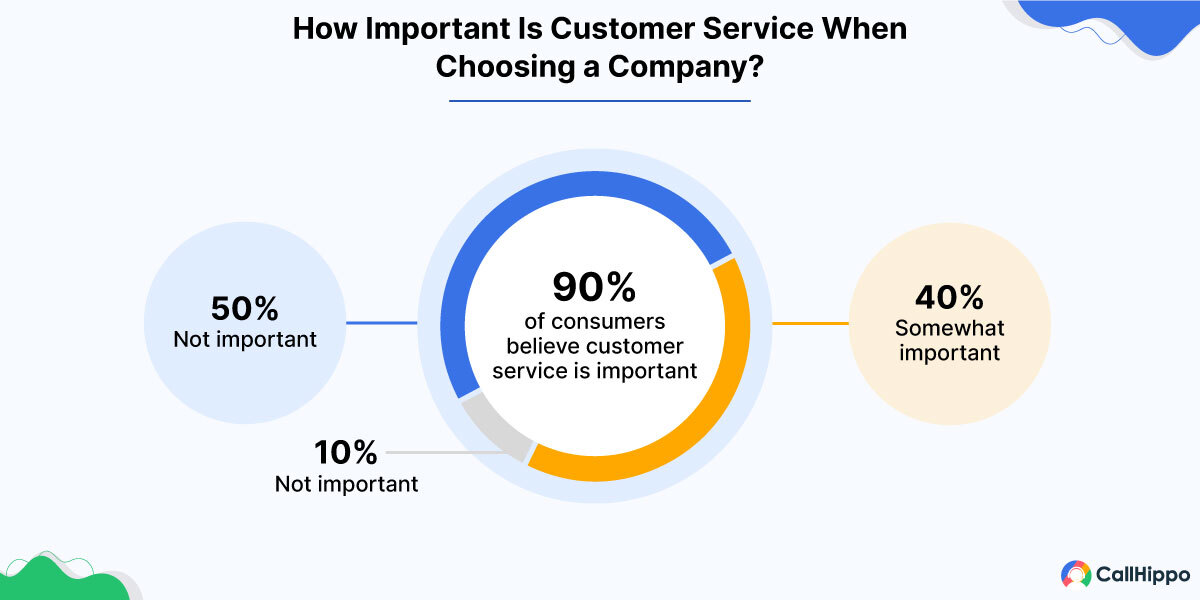
2. Optimized Call Distribution
Call groups optimize call distribution by evenly spreading incoming calls among available team members based on predefined rules or patterns. This method ensures that the workload is balanced, preventing any single team member from becoming overburdened while others are underutilized.
As a result, it maximizes the efficiency of the team, ensuring that calls are handled more effectively, reducing response times, and improving the overall management of call volumes, especially during peak periods.
3. Increased Team Collaboration and Flexibility
Implementing the call group feature creates a collaborative team environment. Members can support each other by sharing the responsibility of answering incoming calls, which promotes a sense of unity and shared purpose.
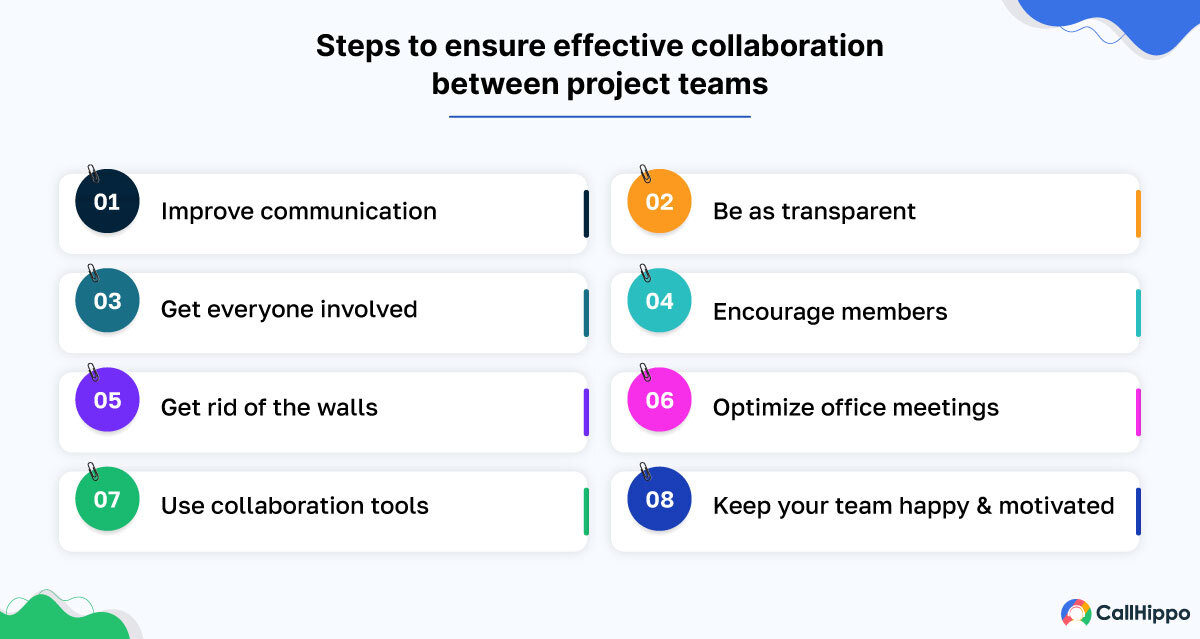
Furthermore, call groups offer flexibility in managing personnel, as members can be easily added or removed in one call group based on demand, expertise, or availability. This adaptability is crucial for businesses that experience fluctuating call volumes or have team members with varying schedules and specializations.
4. Enhanced Professional Image
Businesses employing call groups project a more professional image to callers. This system ensures that calls are less likely to be missed and are answered promptly, demonstrating to customers that the business values their time and inquiries.
The efficiency and reliability of call groups can significantly boost a company’s reputation as they contribute to a smoother, more responsive customer service experience, reflecting well on the company’s operational standards and commitment to excellence.
5. Scalability and Cost-Effectiveness
Call groups are inherently scalable, making them an ideal solution for businesses of any size. They can be easily expanded or adjusted to accommodate growth in call volume or changes in team size without the need for significant infrastructure investment.
This scalability ensures that businesses can maintain high levels of service without proportionally increasing costs. Moreover, the efficient handling of calls can lead to increased customer satisfaction and retention, indirectly contributing to revenue growth and operational cost savings.
How Can Ring Patterns Differ?
Ring patterns in call groups can be customized to fit various operational needs, enhancing how calls are distributed and managed. The most common ring patterns include:
1. Simultaneous Ringing
In this pattern, when a person dials a group call, it rings on all designated phones at the same time. The first person to pick up the phone gets the call. This method is ideal for urgent matters where the quickest response is required, ensuring that someone is always available to answer.
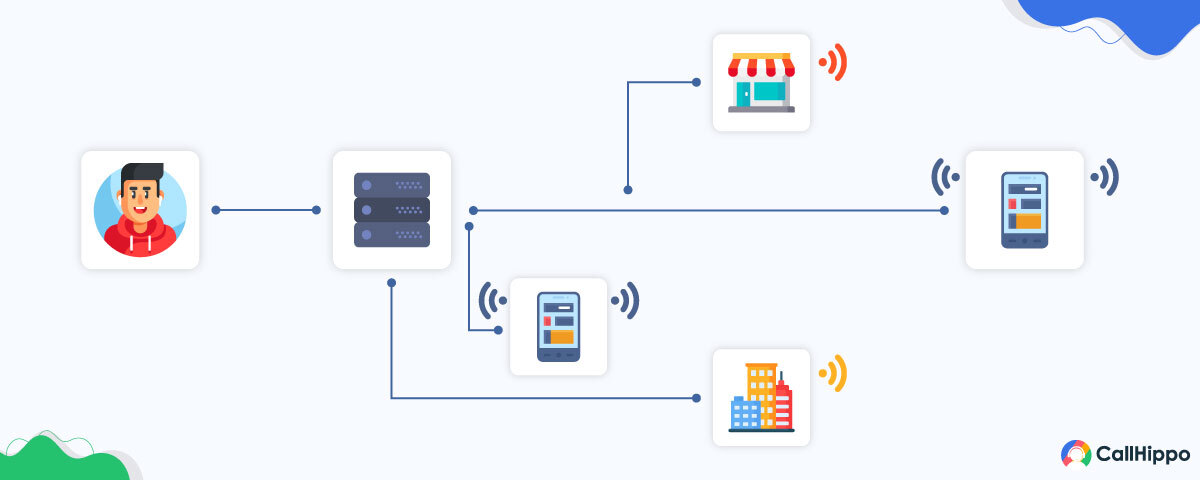
2. Sequential Ringing
This pattern directs incoming calls to ring on phones one after another in a specified sequence. If the first phone doesn’t answer, the call moves to the next in line, and so on. This approach is useful for prioritizing certain team members to handle calls first but ensures others can step in if needed.
3. Round Robin
Round Robin distributes calls evenly by rotating through a list of phones so each phone rings in turn for the next incoming call. This ensures a fair distribution of calls among team members, preventing any single person from being overwhelmed.
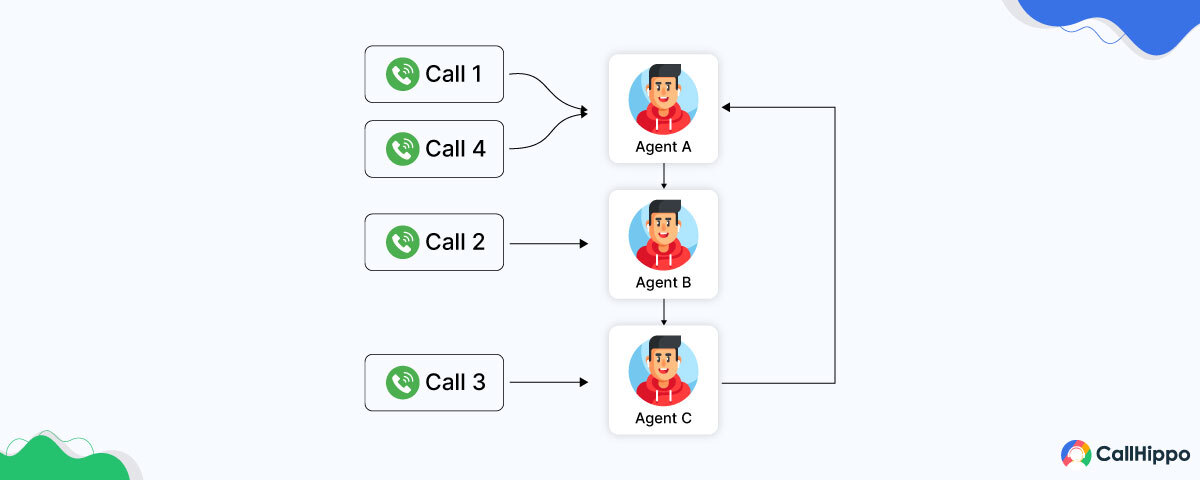
4. Least Recent System
Calls are directed to the team member who has gone the longest without answering a call. This pattern helps balance the workload by ensuring that calls are evenly distributed over time, giving everyone equal rest periods between calls.
5. Fixed Order
Unlike the other patterns, fixed order always sends calls in the same predetermined sequence, regardless of which team members have recently answered. This method is suitable when the order of escalation or expertise is crucial, ensuring that calls go through a specific hierarchy.
These patterns can be tailored to prioritize certain extensions over others or to ensure that calls are evenly distributed, depending on the organization’s specific requirements.
How Do Call Groups Work?
Call groups work by directing incoming calls to a predefined set of extensions. When a call is made to a number associated with a call group, the system triggers the ring pattern set for that group. This could mean ringing all extensions at once, in a specific order, or according to a custom pattern designed to distribute calls based on availability or expertise.
The call can be picked up by any member of the group, ensuring that the caller does not have to wait for a specific individual. This system leverages VoIP technology to route calls over the Internet, providing flexibility and efficiency in handling call traffic.
Administrators can manage call groups through a web interface, where they can add or remove members, change ring patterns, and adjust settings to align with changing business needs.
You May Also Read : What Is Call Listening? The Ultimate Guide
How to Set Up a Call Group in CallHippo?
Setting up a call group in the CallHippo business phone system involves a few straightforward steps:
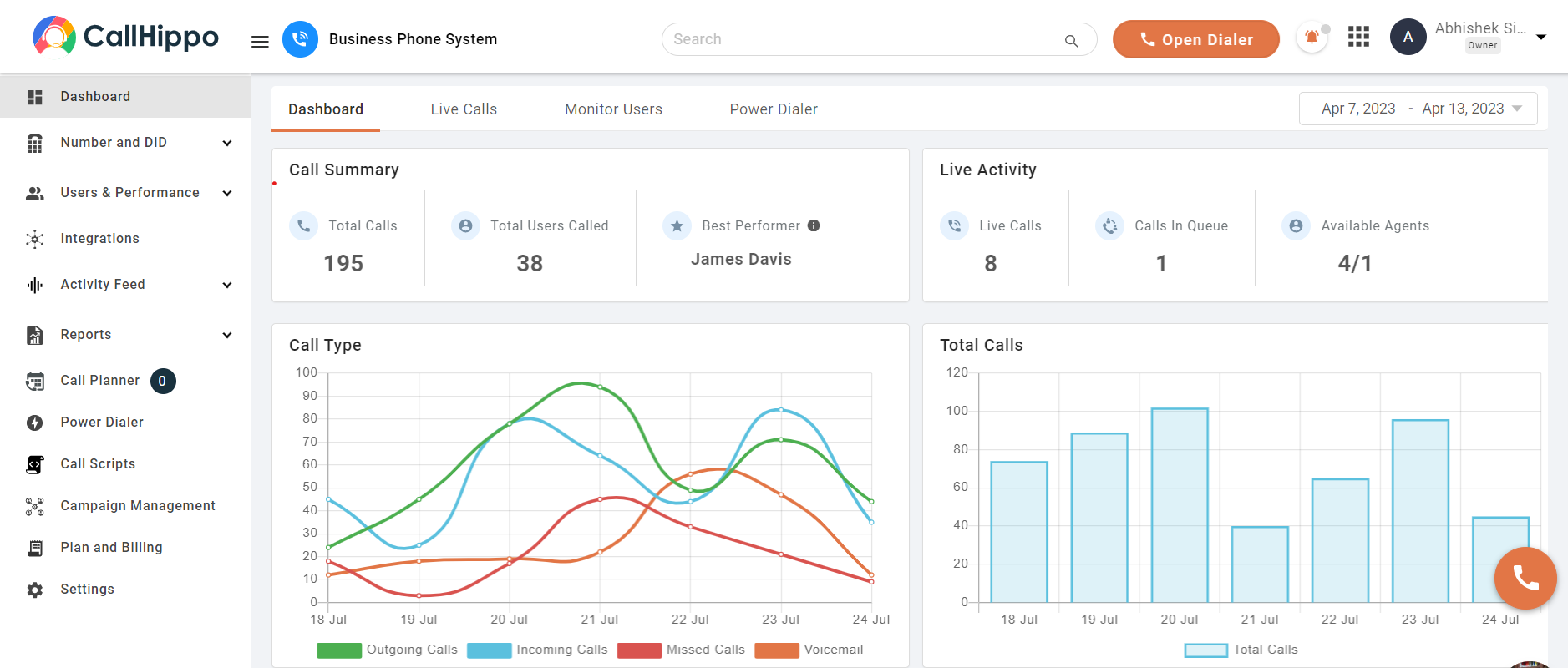
- Log into your CallHippo Dashboard: Access your account to start the setup process.
- Select Users and Performance Tab: Click on the Users and Performance Tab after logging into your CallHippo account.
- Create A Team: Enter the details of your team or group to direct incoming calls.
- Click on Cascading Order: Opt for cascading orders (automatic call distribution), which will allow you to distribute incoming calls within your team in a specific order.
- Configure Ring Pattern: Choose your desired ring pattern (e.g., simultaneous, fixed order, round-robin) that dictates how calls will be distributed among the group members.
- Set Advanced Options: Depending on your needs, you may set additional options like call transfer or set a custom ringing time for incoming calls.
- Save and Activate: Once configured, save your settings and activate the call group. Test it to ensure it works as expected.
Conclusion
At its core, the implementation of a call group within Voice over Internet Protocol (VoIP) technology is emblematic of leveraging contemporary communication tools to advance business operations, refine customer service, and optimize resource allocation.
By intelligently directing incoming calls to designated groups of extensions or users, this technology streamlines communication processes. In doing so, businesses underscore their commitment to innovative solutions, facilitating heightened efficiency and an elevated standard of service in alignment with evolving communication trends.
FAQs
1. What is the difference between a call group and a call pickup group?
A call group is designed to route incoming calls to a set of predetermined extensions. In contrast, a call pickup group allows users to answer calls directed to another extension within their group, enhancing flexibility in call management.
2. How do I connect two phones to call?
To connect two phones for a call, you can use features like call forwarding, where a call to one phone is automatically forwarded to another, or set up a call group where both phones are members, allowing either to answer incoming calls.
3. How many agents can be in a call group?
The number of agents in a call group can vary depending on the VoIP provider’s limitations. However, most systems are highly scalable, supporting anywhere from a few to hundreds of agents.
4. Can one agent be in multiple call groups?
Yes, an agent can be a member of multiple call groups. This flexibility allows individuals to contribute to various departments or projects as needed.
5. How to do group calls?
To initiate a group call, dial the first participant, use the “Add Call” or “Conference” option to include others, and then merge the calls for a collective conversation.

Subscribe to our newsletter & never miss our latest news and promotions.









